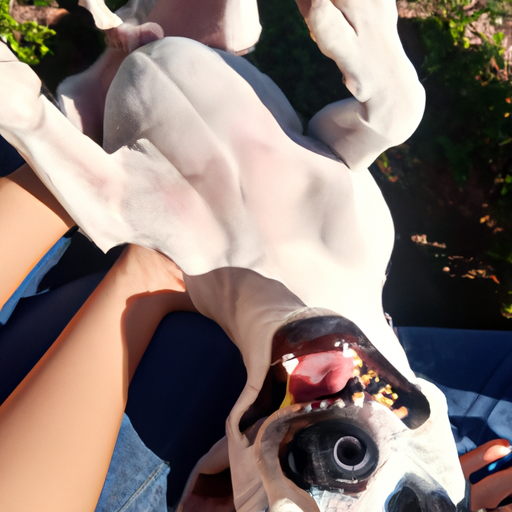Understanding Your Dog’s Emotions
You’ve probably noticed your dog wagging its tail, rolling on its back, and making all sorts of funny sounds when you tickle them. But does this constitute laughter? To fully answer that question, you first need to understand that a dog’s emotional range is not like a human’s. They don’t experience the world in the same way we do, but they certainly have their own unique set of emotions.
Dogs express joy through their body language. When they’re happy, they might wag their tail, jump around, or nudge you with their nose. Their sounds, like yelps and barks, can also denote a range of emotions, which can sometimes include joy or excitement.
The Science Behind Dog Laughter
In 2005, animal behaviorist Patricia Simonet conducted a study to explore the idea of dog laughter. She recorded various ‘panting’ sounds that dogs made during playtime. When these recordings were played back to other dogs, they showed signs of excitement and even began to play themselves.
This suggests that there’s a specific type of panting that dogs use during play, which could be equivalent to human laughter. However, more studies are needed to fully confirm this.
The Art of Tickling Your Dog
If you want to make your dog ‘laugh’, tickling might be a good start. Here are some steps to try:
- Start by rubbing their belly. Most dogs love this and it often triggers a joyful response.
- Keep an eye on their body language. If they seem happy and relaxed, continue with the tickling. If they seem irritated or uncomfortable, stop.
- Try different spots. Just like humans, all dogs are different. Some might enjoy a good ear scratch, while others prefer a back rub.
Interpreting Your Dog’s Reactions
When tickling your dog, watch for these signs of happiness:
- Tail wagging
- Playful barking or yelping
- Rolling onto their back
- Jumping or running around
If you notice any of these, it might be a sign that your dog is indeed ‘laughing’ in their own unique way.
The Joy of Bonding With Your Dog
Finally, remember that tickling isn’t just about making your dog laugh. It’s also a wonderful way to bond with them and show them how much you care. So even if dogs can’t laugh in the way humans do, they can still experience joy and happiness. And isn’t that what really matters?
FAQ
Q: Can dogs laugh?
A: While dogs might not ‘laugh’ in the way humans do, they can express joy and excitement in their own unique ways.
Q: How can I tell if my dog is happy?
A: Look for signs like tail wagging, playful barking, and relaxed body language.
Q: What should I do if my dog doesn’t seem to enjoy being tickled?
A: Not all dogs enjoy tickling. If yours doesn’t, respect their boundaries and find other ways to bond with them.
There’s no denying the joy and laughter that dogs bring into our lives. So whether they’re laughing, barking, or just wagging their tail, let’s treasure every moment of happiness we share with our four-legged friends.



